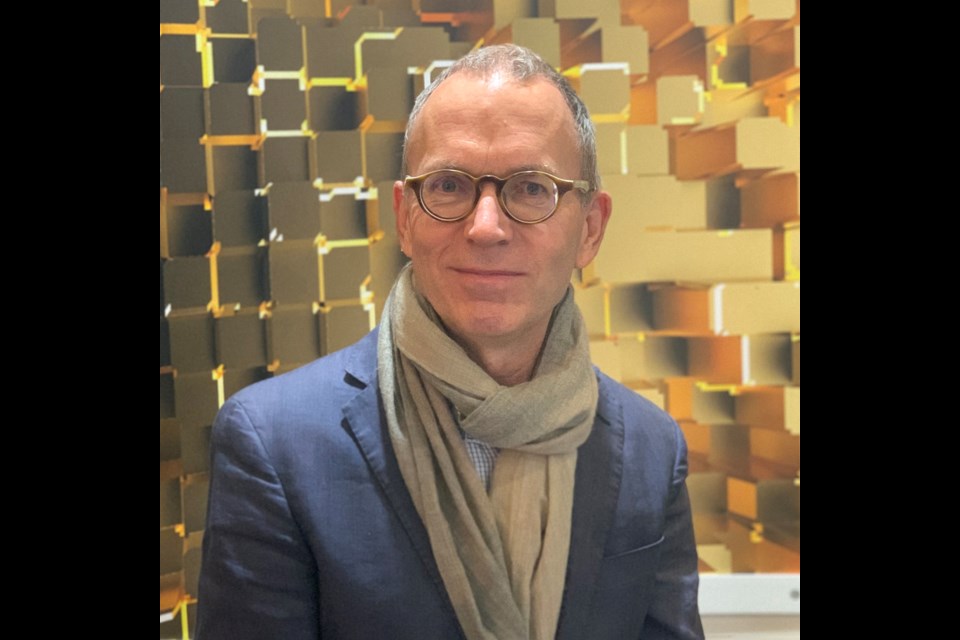The stars in photographer Paul Gravett’s works are people from the past — those whose histories have been lost but whose rusty portraits remain preserved in the annals of the New Westminster Museum and Archives.
Around 15 black-and-white, and sepia photos — of an unidentified girl at St. Peters School, a boy in a swimsuit, a young man in a school cardigan, an unidentified inmate of the B.C. Penitentiary, an unidentified woman, among others — were pulled out from the archives by Gravett for his exhibition Recalled.
“I have been fascinated with old photographs, in particular where the identity of the sitter has been lost,” said Gravett, who has exhibited internationally in Sweden, Italy, Spain, Scotland and the United States, besides Canada.
“I think about who that person was, what was their life like, what were the circumstances leading up to the photograph.”
The portraits were all taken between late 1800s and early 1900s; there are no records of their history except that they all had some connection to New Westminster, said Garrett.
“Of course, it's almost impossible to know any of this (the details of people in the portraits) now, and the identity of the person will likely remain unknown."
Gravett is accepting of that fact. According to him, it only shows "there is an ephemeral nature to life – in the course of time, so much can be lost and forgotten, but these people were nevertheless part of our past, our history.”
Though Gravett specifically wanted to work with such anonymous portraits, it so turned out that not all the people he chose were unknown.
Lost and found identities
Just two weeks before the show launched on Oct.13, he got information about the identity of one of the people featured in the collection. It was of the one Indigenous woman he had included in the series that was otherwise largely composed of "middle class white men," Gravett said.
“In talking with the manager of New Westminster’s Museums and Heritage Services, we discovered that the Indigenous sitter was, in fact, very well-known in her time and is still remembered through a Seattle street name, a long poem, a novel, and a YMCA shelter for women experiencing homelessness.”
Her name was Princess Angeline, as known as Kikisoblu, Kick-is-om-lo, or Wewick. She was the daughter of Chief Seattle, he said.
Gravett couldn’t help but notice the irony that “the Indigenous person is the one who is remembered and all the others remain forgotten in time.” Because generally, as he noted, “Indigenous and marginalized people are often forgotten or written out of history, and it is the white people who are remembered and well-documented.“
Irrespective of who was featured in the portraits though, each one of them turned into an abstract work of art in Gravett's hands — to the point that the person became almost unrecognizable, he said.
Photographs that look like watercolour art
A lot of effort went into it. Gravett said he spent four days, six hours a day, on each portrait — transforming them into “painterly images.”
"That is, images that are not immediately identified as photographs. I suppose, in some ways my images trick the eye, as many people assume they are paintings prepared with watercolours or paint.”
Each finished portrait is worth anywhere between $225 and $395, as per his website.
He started off by taking as many as 30 photos of every portrait, sometimes intentionally shaking his camera to create an effect of motion. He then stacked the photos up digitally and edited them until they began to look more like contemporary art and less like portraits.
“When I start a new image, it is like stepping into a forest with a myriad of paths. I may be able to make some choices along the way, but I have no idea where the paths will lead me and what is on the other side,” he said.
“My process is largely random and un-predictive; it is an accumulation of hundreds of small steps – or individual steps along the forest paths. I gently guide the process of discovery and experimentation, but I never have a concept of the end result until I see it,” he added.
The end result is so far off from what one expects a photograph to be that it's often hard for people to believe it's a photo.
“Some people actually mock-argue with me saying the images have to be done with paint.”
But it's not. It's old school photography plus simple photo editing, he said.
See the works for yourself at the ongoing Recalled exhibition at the Anvil Centre, till Nov. 25. You can also compare Gravett's works with the original portraits from the city's archives using the QR code at the show.




